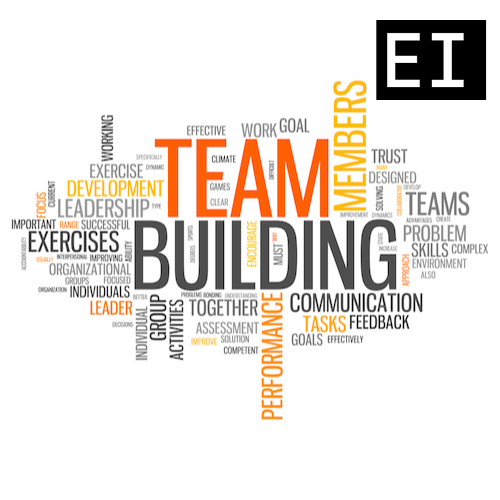Effective communication is the lifeblood of successful team collaboration. In a fast-paced startup environment, clear and efficient communication is vital for fostering a positive and motivating culture that promotes innovation, productivity, and a sense of belonging. In this comprehensive guide, we will explore 12 powerful communication techniques to enhance team collaboration. From active listening to choosing the right communication tools, this article will provide you with actionable tips and famous quotes to create a communication-rich environment that drives success.
Active Listening: The Key to Understanding and Empathy
“Most people do not listen with the intent to understand; they listen with the intent to reply.” – Stephen R. Covey, Author and Educator
Active listening is the foundation of effective communication in team collaboration. Follow these techniques:
- Give undivided attention: Avoid distractions and genuinely focus on the speaker to understand their perspective.
- Practice empathy: Put yourself in the speaker’s shoes to grasp their emotions and thoughts.
- Use non-verbal cues: Nod, maintain eye contact, and use facial expressions to show that you are engaged.
- Ask clarifying questions: Seek clarification to ensure you comprehend the message accurately.
- Avoid interrupting: Allow the speaker to express themselves fully before responding.
Choose the Right Communication Channels: Tailoring Your Approach
“The single biggest problem in communication is the illusion that it has taken place.” – George Bernard Shaw, Playwright
Selecting the appropriate communication channels is crucial for effective team collaboration. Consider the following factors:
- Urgency and priority: Use real-time messaging for urgent matters and emails for non-time-sensitive communication.
- Complexity of the message: Use video calls or face-to-face meetings for complex discussions.
- Team preferences: Understand your team’s communication preferences and adopt tools that align with their needs.
- Transparency and documentation: Choose channels that allow for transparent discussions and easy access to information.
Transparent Communication: Sharing Goals and Progress
“Good communication is as stimulating as black coffee, and just as hard to sleep after.” – Anne Morrow Lindbergh, Author and Aviator
Transparent communication builds trust and accountability within the team. Follow these practices:
- Share company goals and vision: Ensure everyone understands the company’s objectives and their role in achieving them.
- Provide regular updates: Keep the team informed about project progress, milestones, and any changes.
- Encourage feedback: Create an environment where team members feel comfortable sharing their thoughts and suggestions.
- Address concerns openly: Promptly address any issues or challenges to avoid escalation and foster a positive atmosphere.
Effective Feedback: Constructive Criticism and Praise
“The greatest compliment that was ever paid me was when one asked me what I thought, and attended to my answer.” – Henry David Thoreau, Philosopher and Writer
Effective feedback is essential for team growth and development. Consider the following techniques:
- Be specific and timely: Provide feedback promptly and focus on specific behaviors or actions.
- Use the “sandwich” method: Start with positive feedback, offer areas for improvement, and end with encouraging remarks.
- Offer constructive criticism: Frame feedback as an opportunity for growth and improvement rather than criticism.
- Recognize achievements: Celebrate individual and team accomplishments to boost morale and motivation.
Clarity in Communication: Using Precise Language
“Vague language always creates more vague thinking.” – George Orwell, Author
Clarity in communication prevents misunderstandings and promotes efficient collaboration. Follow these tips:
- Use simple language: Avoid jargon and technical terms that may confuse team members.
- Be concise: Get to the point without unnecessary elaboration to keep the message clear.
- Confirm understanding: Ask team members to rephrase instructions to ensure they comprehend the message.
- Provide context: Include relevant background information to help the team understand the bigger picture.
Cultivate a Culture of Openness: Encouraging Free Expression
“The more elaborate our means of communication, the less we communicate.” – Joseph Priestley, Chemist
A culture of openness encourages team members to express ideas and concerns freely. Consider these practices:
- Lead by example: Be approachable and open to suggestions, demonstrating that you value team input.
- Foster brainstorming sessions: Create a safe space for creative thinking and ideation without judgment.
- Encourage questions: Promote curiosity and a learning mindset by welcoming questions and curiosity.
- Emphasize collaboration: Reward teamwork and collective problem-solving to discourage individual silos.
Active Participation in Meetings: Maximizing Engagement
“Meetings are indispensable when you don’t want to do anything.” – John Kenneth Galbraith, Economist
Active participation in meetings is essential for effective collaboration. Follow these techniques:
- Set an agenda: Share meeting topics and objectives in advance to prepare attendees.
- Encourage contribution: Create an environment where everyone feels comfortable sharing their insights.
- Limit meeting duration: Keep meetings concise and focused to maintain participants’ engagement.
- Follow up with action items: Ensure that decisions and action items are recorded and followed through after the meeting.
Conflict Resolution: Navigating Challenges Constructively
“Peace is not the absence of conflict, but the ability to cope with it.” – Mahatma Gandhi, Leader of the Indian Independence Movement
Handling conflict constructively is vital for maintaining a positive team culture. Consider these conflict resolution techniques:
- Address issues promptly: Deal with conflicts as soon as they arise to prevent escalation.
- Seek understanding: Encourage open dialogue to identify the root cause of the conflict.
- Focus on interests, not positions: Look for common ground and shared goals to find a resolution.
- Explore win-win solutions: Aim for outcomes that benefit all parties involved.
Effective communication is the cornerstone of successful team collaboration in a startup culture. By embracing active listening, selecting the right communication channels, promoting transparency, offering constructive feedback, and cultivating openness, you can create an environment that fosters innovation, productivity, and em
ployee satisfaction. Remember, communication is not just about conveying information; it is about building relationships, understanding, and trust, which are essential for any successful team.
. Why is effective communication important for team collaboration? Effective communication is crucial for team collaboration because it enhances understanding, minimizes misunderstandings, and fosters a positive working environment. Clear and open communication allows team members to share ideas, solve problems, and work together towards common goals, leading to increased productivity and overall success.
2. What are some common barriers to effective communication in team collaboration? Barriers to effective communication in team collaboration may include lack of clarity in messages, language barriers, differences in communication styles, distractions, lack of active listening, and hierarchical structures that hinder open discussions. Recognizing and addressing these barriers is essential to improving team communication.
3. How can active listening contribute to better team collaboration? Active listening is a vital aspect of effective communication in team collaboration. When team members actively listen to each other, they show respect, build trust, and gain a better understanding of the message being conveyed. This promotes a supportive and inclusive team environment, leading to improved collaboration and problem-solving.
4. How can non-verbal communication impact team collaboration? Non-verbal communication, including body language, facial expressions, and gestures, can significantly impact team collaboration. It complements verbal messages and can convey emotions, attitudes, and intentions. Being aware of non-verbal cues helps team members understand each other better and avoid misinterpretations.
5. Why is it important to choose the right communication channels for team collaboration? Selecting the appropriate communication channels is essential because different tools suit different situations. For instance, quick updates may be suitable for instant messaging, while in-depth discussions may require face-to-face meetings or video conferences. Using the right channels ensures efficient communication and prevents information from getting lost or overlooked.
6. How can constructive feedback improve team collaboration? Constructive feedback helps team members identify areas for improvement and encourages growth. When given respectfully, feedback can enhance individual and team performance, build trust, and strengthen collaboration. It’s essential to focus on specific behaviors or actions and offer suggestions for improvement rather than criticizing individuals.
7. What role does empathy play in team communication? Empathy is crucial in team communication as it allows team members to understand and connect with each other on a deeper level. By putting themselves in others’ shoes, team members can better appreciate different perspectives and respond more compassionately. This fosters a supportive and cohesive team environment, enhancing collaboration.
8. How can clear goal-setting enhance team collaboration? Clear and well-defined goals provide a shared sense of direction for the team. When everyone understands the objectives and their roles in achieving them, collaboration becomes more focused and efficient. Team members can align their efforts and resources to work towards common goals, leading to improved productivity and teamwork.
9. How can virtual teams improve their communication and collaboration? Virtual teams face unique challenges due to the lack of face-to-face interaction. To improve communication and collaboration, virtual teams should use various online collaboration tools, schedule regular video meetings, establish clear communication guidelines, and foster a culture of openness and trust. Additionally, they can use virtual icebreakers and team-building activities to strengthen relationships.
10. How can conflict resolution positively impact team collaboration? Conflict is a natural part of team dynamics, but how it is handled can significantly affect collaboration. By addressing conflicts promptly and constructively, teams can prevent escalation, maintain positive working relationships, and find creative solutions to problems. Conflict resolution fosters a culture of openness and respect, encouraging effective communication among team members.
11. What is the role of leadership in promoting effective team communication? Leaders play a vital role in promoting effective team communication. They should lead by example, encourage open communication, actively listen to team members, and provide feedback and guidance when needed. A supportive and communicative leader sets the tone for the entire team, creating an environment where communication and collaboration thrive.
12. How can teams continually improve their communication strategies? Teams can continually improve their communication strategies by soliciting feedback from team members, conducting regular communication audits, and identifying areas for improvement. They should be open to trying new communication tools and approaches and adapt their strategies based on the evolving needs of the team and the project at hand. Regularly evaluating communication effectiveness ensures that the team stays on track and maintains a high level of collaboration.
FAQS
1Q. Why is effective communication important for team collaboration?
A: Effective communication is crucial for team collaboration because it enhances understanding, minimizes misunderstandings, and fosters a positive working environment. Clear and open communication allows team members to share ideas, solve problems, and work together towards common goals, leading to increased productivity and overall success.
2Q. What are some common barriers to effective communication in team collaboration?
A: Barriers to effective communication in team collaboration may include lack of clarity in messages, language barriers, differences in communication styles, distractions, lack of active listening, and hierarchical structures that hinder open discussions. Recognizing and addressing these barriers is essential to improving team communication.
3. How can active listening contribute to better team collaboration?
A: Active listening is a vital aspect of effective communication in team collaboration. When team members actively listen to each other, they show respect, build trust, and gain a better understanding of the message being conveyed. This promotes a supportive and inclusive team environment, leading to improved collaboration and problem-solving.
4. How can non-verbal communication impact team collaboration?
A: Non-verbal communication, including body language, facial expressions, and gestures, can significantly impact team collaboration. It complements verbal messages and can convey emotions, attitudes, and intentions. Being aware of non-verbal cues helps team members understand each other better and avoid misinterpretations.
5. Why is it important to choose the right communication channels for team collaboration?
A: Selecting the appropriate communication channels is essential because different tools suit different situations. For instance, quick updates may be suitable for instant messaging, while in-depth discussions may require face-to-face meetings or video conferences. Using the right channels ensures efficient communication and prevents information from getting lost or overlooked.
6. How can constructive feedback improve team collaboration?
A: Constructive feedback helps team members identify areas for improvement and encourages growth. When given respectfully, feedback can enhance individual and team performance, build trust, and strengthen collaboration. It’s essential to focus on specific behaviors or actions and offer suggestions for improvement rather than criticizing individuals.
7. What role does empathy play in team communication?
A: Empathy is crucial in team communication as it allows team members to understand and connect with each other on a deeper level. By putting themselves in others’ shoes, team members can better appreciate different perspectives and respond more compassionately. This fosters a supportive and cohesive team environment, enhancing collaboration.
8. How can clear goal-setting enhance team collaboration?
A: Clear and well-defined goals provide a shared sense of direction for the team. When everyone understands the objectives and their roles in achieving them, collaboration becomes more focused and efficient. Team members can align their efforts and resources to work towards common goals, leading to improved productivity and teamwork.
9. How can virtual teams improve their communication and collaboration?
A: Virtual teams face unique challenges due to the lack of face-to-face interaction. To improve communication and collaboration, virtual teams should use various online collaboration tools, schedule regular video meetings, establish clear communication guidelines, and foster a culture of openness and trust. Additionally, they can use virtual icebreakers and team-building activities to strengthen relationships.
10. How can conflict resolution positively impact team collaboration?
A: Conflict is a natural part of team dynamics, but how it is handled can significantly affect collaboration. By addressing conflicts promptly and constructively, teams can prevent escalation, maintain positive working relationships, and find creative solutions to problems. Conflict resolution fosters a culture of openness and respect, encouraging effective communication among team members.
11. What is the role of leadership in promoting effective team communication?
A: Leaders play a vital role in promoting effective team communication. They should lead by example, encourage open communication, actively listen to team members, and provide feedback and guidance when needed. A supportive and communicative leader sets the tone for the entire team, creating an environment where communication and collaboration thrive.
12. How can teams continually improve their communication strategies?
A: Teams can continually improve their communication strategies by soliciting feedback from team members, conducting regular communication audits, and identifying areas for improvement. They should be open to trying new communication tools and approaches and adapt their strategies based on the evolving needs of the team and the project at hand. Regularly evaluating communication effectiveness ensures that the team stays on track and maintains a high level of collaboration.
Stay updated with the latest in the startup world through our Startup News and Funding Alert. Sections. Explore Founder Profiles, Startup Profile, Founders Interview, Success Stories. In-depth Insights articles, Resources, and How to. Follow us on Facebook, Twitter, Instagram and LinkedIn for regular updates.



